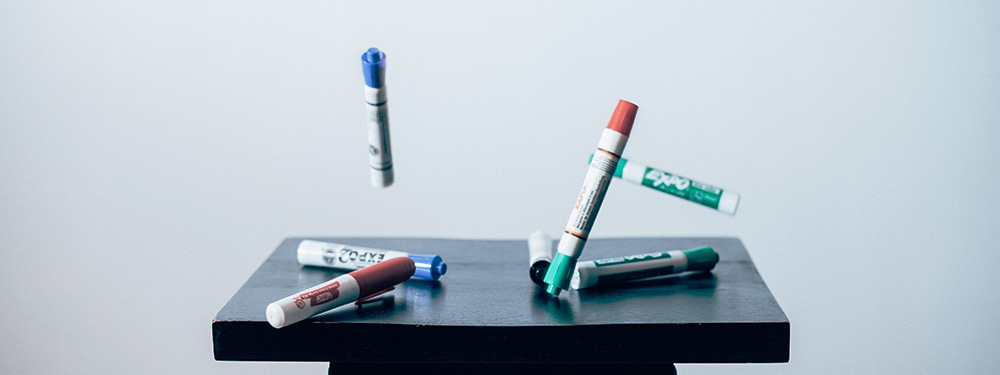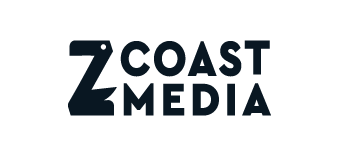What is Digital Marketing?
Well, kids, that’s a great question. But to answer you we’re not going to quote some crappy Wikipedia article (no offense Wikipedia) or leave it to the big boys like HubSpot to define it for us.
No, we’re going to tell you how we define digital marketing here at Z Coast Media. Keep in mind, we’ve been doing this for a while now so we’ve had some time to really think about what the term digital marketing means to us. Ready?
Digital marketing is any type of marketing that involves an electronic device.
Click here to get help kicking off your digital marketing strategy and download our free guide to building a digital marketing strategy that works.
Being totally transparent here, digital marketing is just an umbrella term. A buzzword if you will, used to describe all the different forms of marketing and marketing tools that can be categorized underneath it.
From the beginning, the whole point of marketing has been to cater to the goals of your business by keeping and satisfying your customers. So it’s no surprise that digital marketing has become a thing. Especially if you look at these stats from Statista:
- 65% of people in the US with electronic devices use their devices to browse the internet
- 45% of people in the US with electronic devices use their devices as primary forms of communication
- 39% of people in the US with electronic devices use their devices to browse and buy items/services
As a marketer, it’s only natural that you’d want to meet your customers where they’re at — online via an electronic device such as smartphones or tablets. And in order to do that, you’re going to adopt digital marketing tactics.
What are some digital marketing tactics you can use?
- Content Marketing
- Blog Posts
- SEO
- Web Design
- Paid Search / SEM
- Mobile Marketing (SMS, MMS in-app marketing)
- Social Media Ads
The list goes on. But this list of digital marketing tactics won’t do you a lick of good without a plan. You’ve got to have a digital marketing strategy.
What is a Digital Marketing Strategy?
Knowing which digital marketing tactics you want to use is great but if you don’t have a digital marketing strategy, how will you know that your marketing is in the right place and appealing to the right audience at the perfect moment?
Spoiler: You don’t have a way of knowing any of that without a digital marketing strategy and that’s probably why you asked Google what a digital marketing strategy is in the first place.
Allow us to break it down for you:
- Strategy asks the who, what, why and where questions.
- Tactics answers the who, what, why and where questions.
A lot of people like to try and come up with the tactics part first and then develop their digital marketing strategy but we prefer doing things the other way around.
To quote one of my favorite books, The Art of War by Sun Tzu: “Strategy without tactics is the slowest route to victory.” In other words, your digital marketing strategy will only work if you’ve got the tactics in place to execute your plan.
Putting together a digital marketing strategy can feel intimidating if you’ve never done it before so we put this little guide together to help you out. It’s summarized below but you can download the full version by clicking here so you’ve got an easy reference if you need it.

How to Build Your Digital Marketing Strategy
- Get your buyer personas together. Ask the question: Who am I selling to?
Your marketing strategy, whether it’s digital or not, all comes down to who you’re marketing to. If you don’t have a clue who you’re targeting you won’t be successful. Sorry, but that’s just the truth.
Your buyer personas should be a complete representation of your ideal customer(s). You can create buyer personas by researching, surveying social media, and interviewing your business’s target audience. Do your best not to make assumptions and base your notes on real data instead. Assumptions can literally make an ass out of you when building buyer personas because they can quickly take your digital marketing strategy down the wrong path.
To put together the best buyer persona’s possible include an even mix of current customers, prospects and people outside of your contact lists that align with your target audience.
While building your buyer personas, you’ll want to look at things like:
— Location, which you can use Google Analytics to easily identify
— Age, gather this by identifying trends in your existing prospect/customer database
— Income, gather this in one-on-one interviews
— Job Title, look at your existing customer base
— Goals, ask customers what their goals are and how your product / service has helped or is helping to achieve that goal
— Challenges, talk to your customers
— Hobbies and Other Interests, talk to your customers
— Priorities, talk to your customers and find out what they value - Identify your own goals and the tools you’ll need to achieve them. Ask the question: What are my goals and what tools do I need to achieve them?We just talked about this: strategy first, tactics second.
Define the goals of your business, but whatever those goals are, just remember that you need to know how to measure them. Every business will measure the effectiveness of their digital marketing strategy differently.
What’s vital is your ability to measure the effectiveness of your goals. - Take inventory of your digital marketing channels and assets. Ask the question: What do I currently have to work with?
Once you’ve got your goals down take a look at your available digital marketing channels and assets. You’ve got to figure out what role they’ll play in your digital marketing strategy. The easiest way to categorize your digital marketing channels and assets is to group them into the three groups below:
Owned Media — Owned media refers to the digital assets that your business owns. This may include but is not limited to your blog, your social media profiles, or imagery.
Earned Media — Earned media refers to the exposure you’ve earned via word-of-mouth. This may include but isn’t limited to things like guest posts, the customer experience you’re providing, or recognition on social media (shares for example)
Paid Media — Paid media is pretty self-explanatory (we think) but just in case…paid media refers to any channel that you spend money on to catch attention and capture leads. This may include but is not limited to FB ads, Instagram Ads, or Google AdWords.
Once you’ve gathered all this info together, categorize it in a spreadsheet so that it paints a clear picture of your existing paid, earned, and owned media.
Now you can easily see what you might try to incorporate more of into your digital marketing strategy and what you might cut back on based on the results you’re seeing. - Audit your owned media. Plan your owned media. Understand that owned media is at the heart of digital marketing. Ask the question: What’s working for me?
Yeah, we said it. Owned media is the heartbeat of your digital marketing strategy. At least, it should be.
The thing about owned media though is that it almost always takes the form of content and that’s why you need to audit it and plan it. If you’re serious about building your digital marketing strategy, you have to decide what content is going to help you reach your goals.
Auditing your existing content is hard work but well worth it in the long run.
To audit your existing content, make a list of your existing owned content, then rank each item on the list according to what performed best in relation to your current goals.
The idea behind auditing your content is to figure what’s working, what isn’t, and how to set yourself up for success with your future content plans. After this is done you should discover any gaps in your existing content and be able to formulate a plan on how to fill them.
For example, if you’re a camera company and you find out that one of your persona’s biggest challenges is figuring out how to set up lighting for videos on a budget, but you don’t have any content that addresses that issue, it might be time to create some.
Based on the gaps you identify you can put together a content creation plan. The basics of any content creation plan should include:
— Title
— Format
— Goal
— Promotional Channels
— Why you’re creating it
— Priority level
Once you’ve accomplished this just repeat for your paid media and your earned media. After you’ve completed all the steps above you should have:
- A clear picture of your buyer personas
- At least one digital marketing-specific goal (more is great)
- An inventory of all existing owned, earned, and paid media
- An audit of all existing owned, earned and paid media
- A content creation plan
Now for the fun part! It’s time to bring it all together.

Your Basic Digital Marketing Strategy
You’ve done all the hard stuff! Yay! Now you get to build your digital marketing strategy doc. Your strategy document should map out what actions you plan to take to achieve your goals. It should answer all the questions you asked while researching and auditing.
Again, it’s probably best to use a spreadsheet for this — they’re a necessary evil — and if you want to go extra easy on yourself, map out your strategy according to the media framework you’ve used up to this point.
You should also think long-term when creating your strategy. We suggest a minimum of 12 months depending on how your business operates. For example, you might cook up something that all ties together like this:
- January — Start blogging. Publish a new blog on a bi-weekly schedule for the whole year.
- April — Start repurposing content from blog posts in Q1 into videos for your YouTube channel
- July — Run a summer giveaway that requires audience members to watch a video, share a social media post, or download a piece of content to enter
- October — Start focusing on FB ads and Instagram Ads
Those are just some snippets from our own digital marketing strategy for 2018 but we hope it’s enough to inspire you to get started.
If you’re interested in learning more or chatting about building an effective digital marketing strategy for your business, leave us a comment below or get in touch with us by clicking here.
